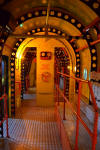Round The World and other travels
A frequent flyer's collection of trip diaries
February 2016: Liverpool
For many years, I felt that there were four glaring gaps in my own personal record of visiting UK cities: Cardiff, Belfast, Liverpool and Norwich. I finally made it to Cardiff in June 2015 and visited Belfast in January 2016. Now, at last, it was Liverpool's turn; perhaps I'll manage to see Norwich in 2017.
Liverpool is one of the largest cities in Northern England, and there is a perceptible rivalry with Manchester over which is top dog in the Northwest. The city's former wealth came from its activities as a major port, and this maritime heritage also led Liverpool to have both the oldest Chinese community in Europe and a significant population of Irish descent. The 20th century was not kind to Liverpool, but as in so many similar cases, intensive regeneration efforts are now bearing fruit. The waterfront area is a UNESCO World Heritage Site, while the city as a whole was European Capital of Culture in 2008. Liverpool is well known for sports (notably football and horse racing), popular music (most famously as the home of The Beatles) and major museums (such as the Walker Art Gallery and Tate Liverpool).
City centre
Visitors arriving at Liverpool Lime Street Station - and I wasn't one of them, incidentally - are in for a pleasant surprise. The station itself is nice enough, and in the immediate vicinity the arriving passenger will find the former North Western Hotel, St George's Hall, the Walker Art Gallery, Central Library, the World Museum, St John's Gardens, Radio City Tower and two theatres. That's a pretty strong showing for first impressions!
 |
 |
 |
 |
 |
 |
 |
 |
 |
 |
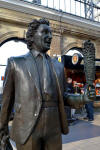 |
 |
 |
 |
 |
 |
Elsewhere in the city centre, Liverpool Town Hall makes an impressive sight.
| RIGHT: Liverpool's magnificent Town Hall, built in the Georgian style |
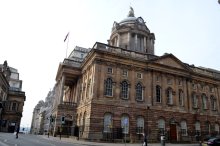 |
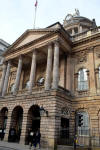 |
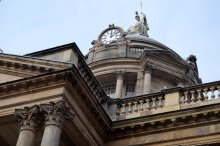 |
Pier Head and Albert Dock
Liverpool's World Heritage Site, formally called the 'Maritime Mercantile City', includes the Pier Head, which features a trio of iconic buildings known as the 'Three Graces': the Royal Liver Building, the Cunard Building, and Port of Liverpool Building. It also includes the Albert Dock, home to a number of attractions including Tate Liverpool and The Beatles Story (see column on right).
 |
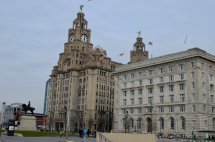 |
 |
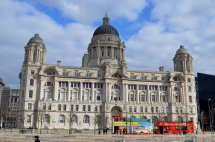 |
 |
 |
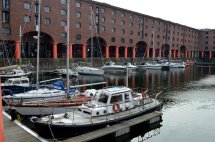 |
 |
 |
 |
 |
 |
 |
Cathedrals
Liverpool has two landmark cathedrals, famously linked by Hope Street - although the street name predates both buildings. The Anglican cathedral sits on St James's Mount and is built on a gargantuan scale, making it one of the largest church buildings in the world. Constructed between 1904 and 1978, it is in Gothic Revival style and was designed by Giles Gilbert Scott. At the other end of Hope Street, next to Liverpool University, is Liverpool Metropolitan Cathedral, seat of the city's Roman Catholic archbishop. The building is a fusion of two different visions. The crypt was part of a design by Edwin Lutyens which, if carried through to completion, would have resulted in another enormous building featuring the world's largest dome; however construction was halted by World War II. The main building that we see today was erected over the Lutyens crypt in 1962, to a modern and highly distinctive conical design by Frederick Gibberd. The boldness of the cathedral's design has caused the structure to be given a number of nicknames, the most amusing of which (in my opinion) is 'the Mersey Funnel'.
In terms of personal reactions, call me picky, but I didn't warm to either cathedral from the outside, albeit for different reasons. I thought that each building gave a better account of itself when experienced from the inside.
 |
 |
 |
 |
 |
 |
 |
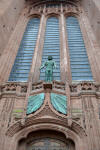 |
 |
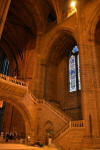 |
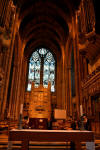 |
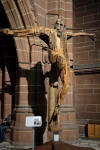 |
 |
|||||
| ABOVE: Liverpool Cathedral (Church of England), on Liverpool's St James's Mount | |||||
| BELOW: Liverpool Metropolitan Cathedral (Roman Catholic), at the opposite end of Hope Street | |||||
 |
 |
 |
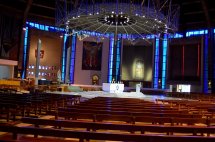 |
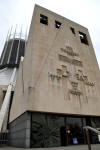 |
|
 |
 |
 |
|||
Ferry 'cross the Mersey
The 1964 hit by Gerry and the Pacemakers points the way to one of the must-do activities for visitors to Liverpool. We made the crossing to Birkenhead, on the Wirral peninsula, on the Snowdrop, which was painted in a temporary 'razzle dazzle' livery inspired by camouflage measures used during the First World War. Birkenhead itself is sometimes panned as dull and uninspiring, but it does contain the attractive Hamilton Square, designed by Scottish architect James Gillespie Graham and featuring Georgian architecture that instantly recalls Edinburgh's New Town.
 |
 |
 |
 |
 |
 |
 |
 |
 |
 |
 |
 |
| ABOVE: Ferry crossing on the exceptionally colourful MV Snowdrop | |||||
| BELOW: Our brief visit to Birkenhead | |||||
 |
 |
 |
 |
 |
 |
'The Beatles Story' exhibition
The Beatles Story, located at Albert Dock, is said to be the world's largest permanent exhibition purely devoted to the lives and times of the 'fab four'.
Base: Marriott
| Linked reports from same trip: |
| South & SW England |
| Bristol |
| Lacock |
| Winchester |
| Salisbury |
| Bournemouth |
| Dorchester |
| Weymouth |
| Exeter |
| Dawlish |
| Manchester |









